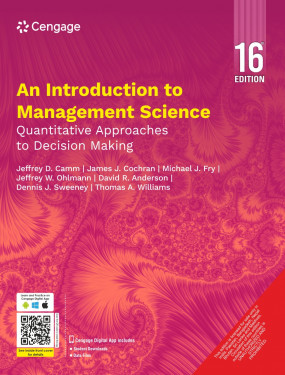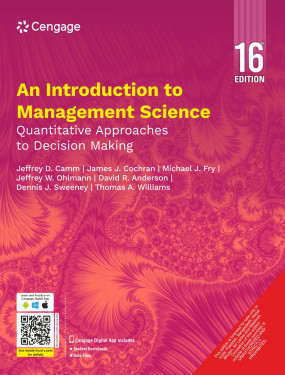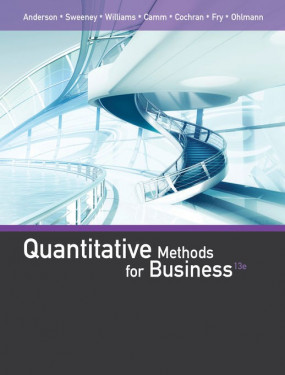You don't have to be a mathematician to maximize the power of quantitative methods. Written for the current−or future−business professional, QUANTITATIVE METHODS FOR BUSINESS, 13E makes it easy for you to understand how you can most effectively use quantitative methods to make smart, successful decisions. The book's hallmark problem-scenario approach guides you step by step through the application of mathematical concepts and techniques. Memorable real-life examples demonstrate how and when to use the methods found in the book, while instant online access provides you with Excel® worksheets. The chapter on simulation includes a more elaborate treatment of uncertainty by using Microsoft Excel to develop spreadsheet simulation models. The new edition also includes a more holistic approach to variability in project management. Completely up to date, QUANTITATIVE METHODS FOR BUSINESS, 13E reflects the latest trends, issues, and practices from the field.
- "Notes & Comments" sections provide insights, warnings, and technical tips on methodologies.
- Self-Test Exercises with full solutions help students check comprehension before moving forward.
- Q.M. in Action articles showcase real-world applications from sources like INTERFACES and OR/MS TODAY.
- Margin annotations highlight key points and offer additional insights for deeper understanding.
- Chapter 16 on simulation is fully revised, using Excel and Analytic Solver for uncertainty modeling.
- New end-of-chapter cases offer open-ended, real-world applications in linear programming, networks, and integer programming.
- Appendix A now includes Excel’s Data Tables and Goal Seek for building simulation models.
- Forecasting notation in Chapter 6 is updated to align with regression-style standards.
- 35+ new and updated homework problems ensure relevance and variety.
- New section on project variability explains how non-critical paths can impact deadlines.
- 15 new Q.M. in Action vignettes provide fresh, contemporary examples of quantitative methods in practice.
Preface.
1. Introduction.
2. Introduction to Probability.
3. Probability Distributions.
4. Decision Analysis.
5. Utility and Game Theory.
6. Time Series Analysis and Forecasting.
7. Introduction to Linear Programming.
8. Linear Programming: Sensitivity Analysis and Interpretation of Solution.
9. Linear Programming Applications in Marketing, Finance, and Operations Management.
10. Distribution and Network Models.
11. Integer Linear Programming.
12. Advanced Optimization Applications.
13. Project Scheduling: PERT/CPM.
14. Inventory Models.
15. Waiting Line Models.
16. Simulation.
17. Markov Processes.
Appendix A: Building Spreadsheet Models.
Appendix B: Binomial Probabilities.
Appendix C: Poisson Probabilities.
Appendix D: Areas for the Standard Normal Distribution.
Appendix E: Values for e-λ.
Appendix F: References and Bibliography.
Appendix G: Self-Test Solutions and Answers to Even-Numbered Problems.
David R. Anderson
David R. Anderson is a leading author and professor emeritus of quantitative analysis in the College of Business Administration at the University of Cincinnati.
Dennis J. Sweeney
Dennis J. Sweeney is professor emeritus of quantitative analysis and founder of the Center for Productivity Improvement at the University of Cincinnati.
Jeffrey D. Camm
Jeffrey D. Camm is the Inmar Presidential Chair and senior associate dean of business analytics programs in the School of Business at Wake Forest University.
James J. Cochran
James J. Cochran is associate dean for research, a professor of applied statistics and the Rogers-Spivey Faculty Fellow at The University of Alabama.
Michael J. Fry
Michael J. Fry is a professor of operations, business analytics and information systems as well as academic director of the Center for Business Analytics in the Carl H. Lindner College of Business at the University of Cincinnati.
Jeffrey W. Ohlmann
Jeffrey W. Ohlmann is associate professor of business analytics and a Huneke Research Fellow in the Tippie College of Business at the University of Iowa.















